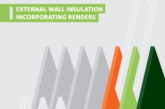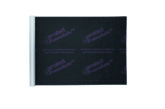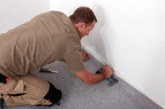Well-specified flooring throughout an educational facility can contribute to an effective learning environment. Lewis Cooper, Segment Marketing Manager for Education at Forbo Flooring Systems, explains what factors specifiers should consider within schools, colleges and universities and the importance of looking at how different classrooms and areas require their own solution.
Flooring not only allows specifiers to inject colour and pattern into educational settings, but the way it is installed can actually improve how spaces are used and how students and staff orientate around the building. It can also help specifiers to meet inclusive design needs, while even boosting learning progress and behaviour.
For guidance on the type of floor finishes that should be used in schools, HM Government’s Education Skills and Funding Agency has produced a Generic Design Brief. The guide states that flooring should be hard wearing, safe and fit for purpose — which includes choosing textures and colours appropriate to the ages and needs of the pupils, particularly those with SEND (Special Educational Needs and Disability). But how does this translate into real-life education environments?
The starting point is to understand how each area of a school will be used in terms of activity and footfall from entrance to exit. Hygiene and ease of cleaning have always been a priority in this sector but are paramount now more than ever in the current climate. Careful consideration must also be given to factors such as acoustics, durability and slip resistance.

Classrooms that enhance learning
Within general teaching suites, the key is to create a safe and warm environment that encourages pupils to feel secure and inspired. Similarly, acoustics are critical, as unwanted noise can seriously impair students’ learning ability. The aim is to avoid excess reverberation and optimise speech intelligibility.
Understanding the different types of acoustic challenges that education facilities currently face helps to get it right. Specifiers must look to improve levels of in-room sound absorption and impact sound reduction. The former refers to levels of sound intensity absorbed into different materials in a room, whilst the latter focuses on limiting the decibel level of certain impacts, such as footsteps or moving chairs from one floor to the rooms below.
Acoustic vinyl sheet is an all-round performer, offering excellent sound performance of 15 dB to 19 dB, along with easy cleaning and a range of colours and designs. Carpet tiles are also popular, achieving impact sound reductions of between 22 dB and 30 dB, to encourage maximum concentration from pupils. Inviting, tactile, modular formats also mean individual tiles can easily be maintained or replaced if they become damaged.
Combining the best of both worlds, flocked floor coverings, like Forbo’s Flotex, provide the comfort and warmth of a textile with increased resilience and acoustic benefits, thanks to the hardwearing flocked construction. Flocked solutions are ideal for classrooms that see heavy foot traffic and movement of chairs, calling for a more durable choice.

Teaching areas with specialist requirements
For specialist teaching zones including arts, science, food preparation and design technology, where spillages and debris on the floor can be common, safety and high slip resistance is vital.
It’s worth considering a safety vinyl sheet specifically designed to minimise the risk of slips and trips and meeting all HSE and European safety norms. Look for floor covering options that achieve a Pendulum Test Value (PTV) of at least ≥ 36. In science laboratories or areas where there is an increased likelihood of contamination, a homogeneous vinyl sheet with an effective top surface finish will provide high resistance to chemicals, scratches and stains.
Flooring for sports facilities
Understanding how a sports facility will be used will help with the specification process. Safety and comfort of its users is top priority and durability should also be taken into account, alongside cleaning and maintenance.
For school and university sports halls that cater for a variety of activities, such as team sports, meetings, ceremonies or exams, look for options that meet the requirements of Sport England and EN 14904 (P1 classification). A high-performance vinyl sheet sports flooring like Forbo’s Sportline multi use collection is a safe, durable and low maintenance solution.

Corridors for calmer classroom changeovers
Corridors take a pounding from foot traffic, so floor coverings need to be extra tough to withstand the onslaught. Durability, slip resistance and sound reduction are the key things to consider when choosing solutions for these noisy, busy spaces. An acoustic vinyl or general purpose vinyl (GPV) sheet is a hard-wearing option that can offer impact sound reduction to mitigate the din caused by rowdy students and maintain calmer, safer lesson changeovers.
Entrances that improve safety and reduce cleaning costs
According to the Health and Safety Executive (HSE) 55% of all accidents in education are caused by a slip or a trip reference number, which is why entrances shouldn’t be overlooked.
One of the key stipulations in the Generic Design Guide is that all external entrances should feature suitable barrier matting ‘to remove dirt and moisture from the soles of shoes and wheeled traffic’. With large numbers of pupils passing through the building every day — most of whom are unlikely to stop to wipe their feet — an effective entrance system is a must.
A robust first line of defence that might be a rigid single- and double-sided mat, or a textile clean-off system such as Forbo’s Coral entrance flooring system. Coral is designed to stop up to 95% of dirt and moisture from entering the building — which in turn, helps to reduce slips and falls. What’s more, cleaning costs can be cut by up to 65%.
Other areas must be considered too. From toilets, dining and kitchen areas, libraries and lecture theatres to reception and administrative spaces, they all contribute to a building’s user experience.
In short, as a surface that users are in constant contact with, use flooring as an opportunity to make educational establishments that are not just safer and easier to clean, but that create places that inspire both students and teachers, creating connection and improving performance.
Header image: Forbo’s Step Safety Vinyl flooring installed at the Physiotherapy Centre at the University of Winchester.









